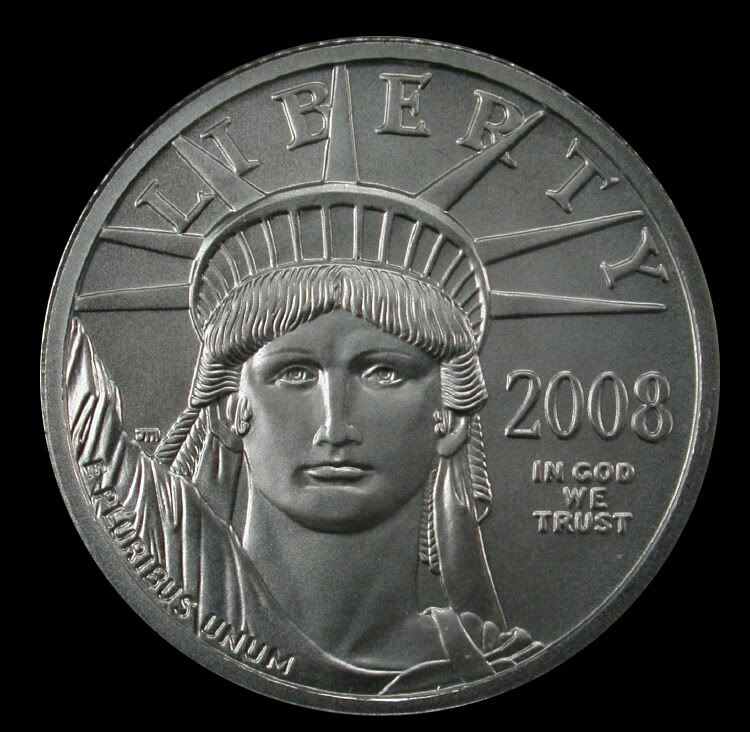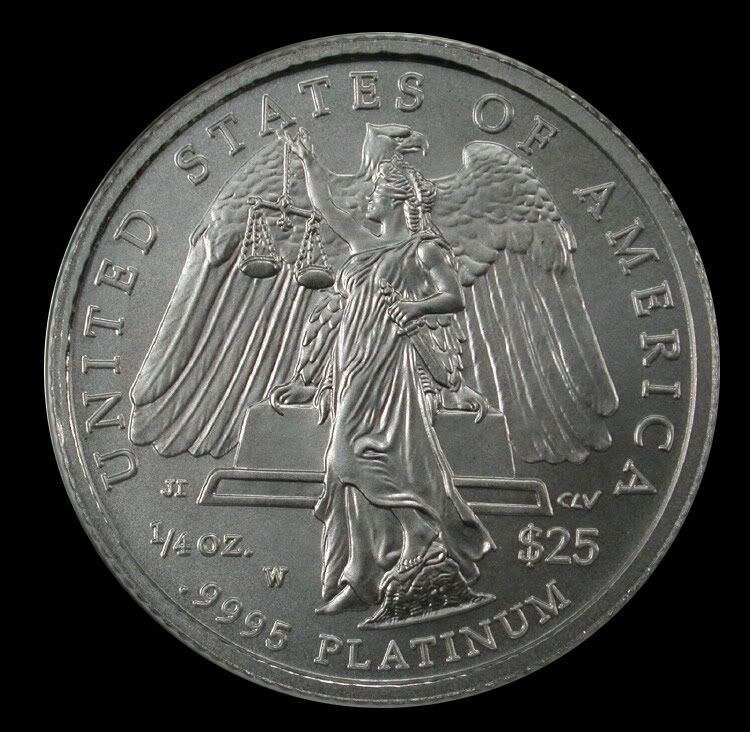American Platinum Eagle: Bullion Platinum of the United States of America
The American Platinum Eagle is the official platinum bullion coin of the United States. The coins were first released by the United States Mint in 1997. It is offered in 1/10, 1/4, 1/2, and 1 troy oz varieties and consists of .9995 fine platinum. The American Platinum Eagle is authorized by the United States Congress and is backed by the United States Mint for weight and content.
Proof and uncirculated versions of the coins are also made for coin collectors. The proof and uncirculated American Platinum Eagles are unique in the fact that they are the only U.S. bullion coins that have a yearly alternating design on the reverse.
Because it may be considered commodity platinum rather than a rare coin, the American Platinum Eagle may be placed in an Individual Retirement Account in the United States. Collectibles such as rare coins and dolls are forbidden from being held in such an account. Thus, the United States Securities and Exchange Commission believes that the Platinum Eagle will not appreciate beyond its metal value.
The 1/10, 1/4, and 1/2 troy oz coins are identical in design to the 1 troy oz coin except for the markings on the reverse side that indicate the weight and face value of the coin (for example, .9995 PLATINUM 1 OZ.). As is often the case with bullion coins, the face values of these coins ($10, $25, $50, and $100) are purely symbolic and do not reflect their intrinsic value. They are still by all means legal tender, however legal debate persists with respect to its value in terms of "income"
Beginning in 1998, proof versions of the American Platinum Eagle began a program entitled "Vistas of Liberty". Each year a new design is used on the reverse that portrays a bald eagle in a different region of the United States or a United States themed design. All denominations of the proof American Platinum Eagles carry the yearly design. These coins are the only U.S. bullion coins that change reverse designs every year.
The preceding is from wiki.
Beginning in 2009, fractional coins will no longer be available.
The pictured coin is from the West Point Mint (and my first and currently only platinum coin).


Proof and uncirculated versions of the coins are also made for coin collectors. The proof and uncirculated American Platinum Eagles are unique in the fact that they are the only U.S. bullion coins that have a yearly alternating design on the reverse.
Because it may be considered commodity platinum rather than a rare coin, the American Platinum Eagle may be placed in an Individual Retirement Account in the United States. Collectibles such as rare coins and dolls are forbidden from being held in such an account. Thus, the United States Securities and Exchange Commission believes that the Platinum Eagle will not appreciate beyond its metal value.
The 1/10, 1/4, and 1/2 troy oz coins are identical in design to the 1 troy oz coin except for the markings on the reverse side that indicate the weight and face value of the coin (for example, .9995 PLATINUM 1 OZ.). As is often the case with bullion coins, the face values of these coins ($10, $25, $50, and $100) are purely symbolic and do not reflect their intrinsic value. They are still by all means legal tender, however legal debate persists with respect to its value in terms of "income"
Beginning in 1998, proof versions of the American Platinum Eagle began a program entitled "Vistas of Liberty". Each year a new design is used on the reverse that portrays a bald eagle in a different region of the United States or a United States themed design. All denominations of the proof American Platinum Eagles carry the yearly design. These coins are the only U.S. bullion coins that change reverse designs every year.
The preceding is from wiki.
Beginning in 2009, fractional coins will no longer be available.
The pictured coin is from the West Point Mint (and my first and currently only platinum coin).


 Quid pro quo. Yes or no?
Quid pro quo. Yes or no? 0
Comments